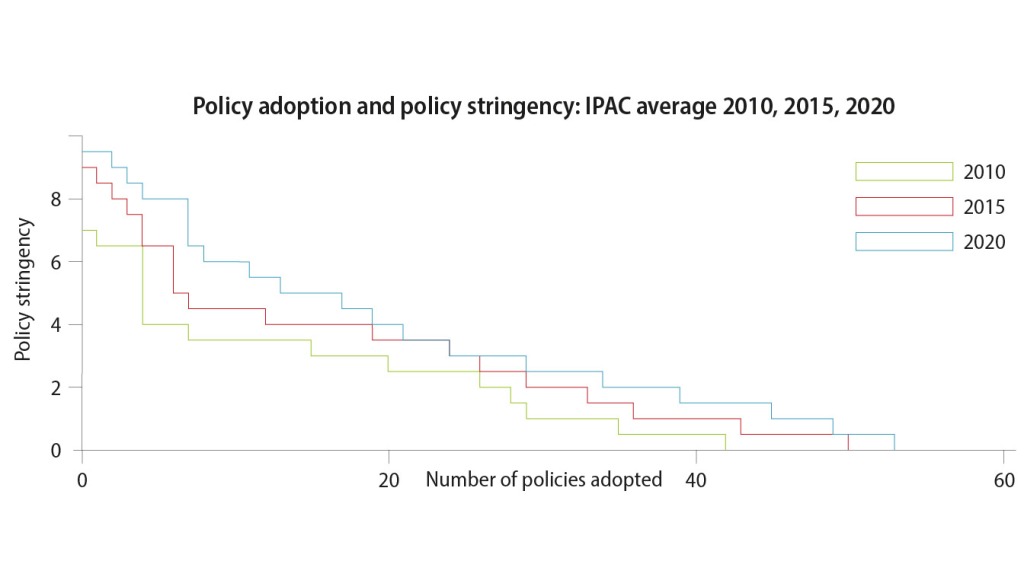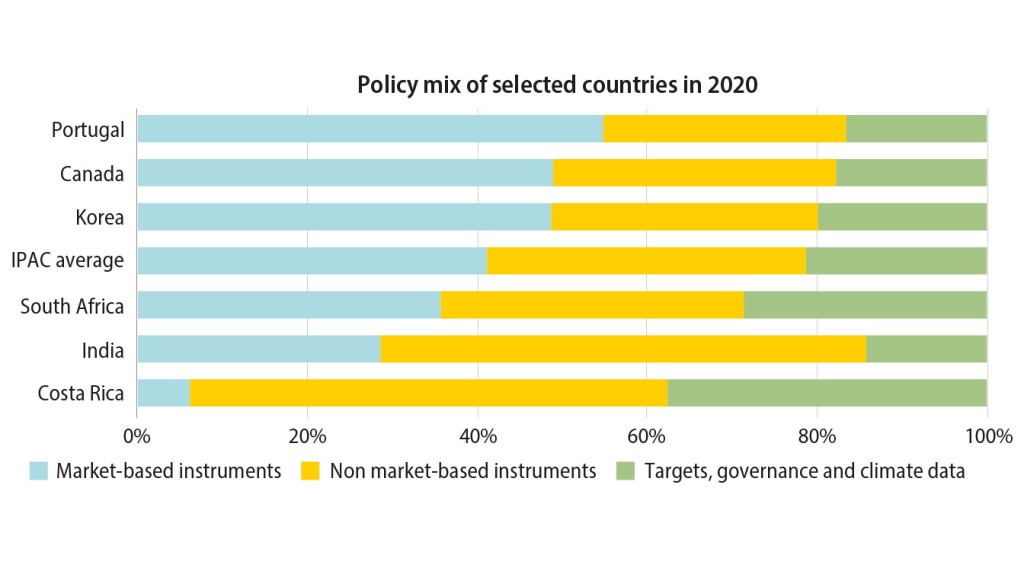

10/01/2024
In the period 2010 - 2020, many countries in the world have made efforts to strengthen their climate action, but many countries have not adopted the full range of policies available or used setting of the necessary stringency. So, more work needs to be done by countries to explore which policy mixes work best under which circumstances to reach countries’ NDCs and the goals of the Paris Agreement.
Providing crucial insights into the progress of countries toward their net-zero goals
We have seen a growing number of countries strengthen their emission reduction pledges by updating their Nationally Determined Contributions (NDCs) or by pledging carbon neutrality targets towards mid-century. But with the increasing urgency of the climate crisis, what are countries doing to implement these targets and how has the climate policy landscape evolved over the last decade or so? At the 26th United Nations Climate Change Conference of the Parties (COP26), most countries updated their NDCs. The United Nations Framework Convention on Climate Change (UNFCCC) compiled the principal measures reported by countries in their NDCs in 2022. To support the UNFCCC reporting process, the OECD’s International Program for Action on Climate (IPAC) has carried out a detailed assessment of climate action for 51 countries and the EU through the Climate Actions and Policies Measurement Framework (CAPMF). The CAPMF draws on the UNFCCC effort to identify countries’ declared climate policies but goes further by tracking which policies and policy instruments have been adopted and with what level of stringency. The CAPMF is a structured and harmonized climate mitigation policy database with 128 policy variables grouped into 56 policy instruments and other climate actions, covering 51 countries and the EU (OECD, G20 and OECD accession candidate countries) and the EU from 2000 to 2020. This Framework provides information to develop indicators to support the country’s progress towards net-zero GHG emissions. It covers both climate policies with explicit intent to advance mitigation as well as non-climate policies that are expected to have a positive effect on mitigation. These include sectoral, cross-sectoral and international policies of which market-based instruments (carbon taxes, subsidies for zero-carbon technologies), non-market-based instruments (standards, bans) and other climate actions (short-term and long-term emissions targets, climate governance).
The CAPMF indicates that countries, on average, strengthened their climate action between 2010 - 2020 (Figure 1) - increasing not only the number of policies adopted, but also the stringency of already existing policies. The increase in policy adoption was particularly driven by support for renewable electricity, carbon pricing as well as bans and phase out of fossil fuel infrastructure such as coal power plants.

Figure 1. Countries strengthened climate action between 2010 and 2020
This increase in the overall average, however, masks important differences in policy development across countries. While most countries increased the number of adopted policies between 2015 and 2020, not all adopted the same amount. For example, Canada implemented 10 of the total 56 additional policies covered in the analysis between 2015 and 2020 (representing almost 18% of new policies). Some countries did not adopt any and others even backtracked on climate policies.
Countries have made efforts to strengthen their climate action, but many countries have not adopted the full range of policies available or used setting of the necessary stringency. More can and should be done to achieve the ambitious Paris Agreement targets.
Pursuing efforts to fight climate change
Over the last 10 years, countries have changed the types and mix of policies they use. Market-based policy instruments such as carbon pricing or financial support for renewable energy have increasingly been adopted by countries. The rise in carbon pricing was particularly driven by the implementation of the European Union Emissions Trading Scheme in 2005, after which countries increasingly used carbon pricing schemes. However, global carbon price levels and emissions coverage are still too low to be in line with the goals of the Paris Agreement.
Countries use very diverse policy mixes to reduce emissions (Figure 2). While some countries such as Portugal primarily rely on market-based policies, others like Costa Rica emphasize non-market-based instruments, such as minimum energy performance standards and bans or phase outs of fossil fuel infrastructure. These differences reflect the complex interactions of multiple factors, including legal traditions, political constraints, and social preferences.

Figure 2. Climate policy mixes differ substantially across countries
The 2015 Paris Agreement marked a pivotal moment in our global efforts to combat climate change. The parties to the agreement have already taken substantial action. Yet, there is an urgent need to set more ambitious targets to accelerate implementation.
While countries by and large strengthened their climate action in the last decade, emissions are not on track to meet countries’ NDCs and are not compatible with reaching net-zero GHG emissions by mid-century according to the IPAC Climate Action Monitor 2022. In fact, after COVID-19 dented global GHG emissions in 2020 and 2021, emissions strongly rebounded in 2022, reaching the largest annual level ever recorded. The analysis based on the CAPMF suggests that there are still opportunities for countries to strengthen their climate action to accelerate further emissions reductions. In fact, no country has adopted all policies covered in the database. Policy makers could use the CAPMF to identify areas where new policies could be adopted, or existing ones strengthened.
Descriptive results of the CAPMF suggest that countries with stronger climate action are associated with steeper emissions reductions. In fact, countries with an above-average number of adopted policies and above-average policy stringency were most successful in reducing their emissions. However, more work needs to be done to explore which policy mixes work best under which circumstances to reach countries’ NDCs and the goals of the Paris Agreement. In addition, achieving the necessary transformation, more effective and strategic international cooperation in technology development and transfer, and innovation is essential for rapid system transformations aligned with the goals of the Paris Agreement.
By providing essential data, addressing challenges, and fostering collaboration, IPAC plays a crucial role in shaping effective climate policies and ensuring a resilient transition to a sustainable and low-carbon future. As the world grapples with the urgent need for climate action, the insights and initiatives derived from IPAC offer a pathway toward a more sustainable and climate-resilient global community.
Đức Anh (Source: OECD Environment)
(Source: The article was published on the Environment Magazine by English No. IV/2023)